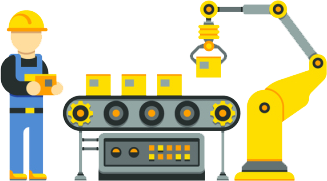Aluminum Alloy Wheel Painting Production Line
The aluminum alloy wheel painting production line is a highly automated and complex coating system designed to enhance the appearance and corrosion resistance of wheel hubs. Here is a detailed description:
1. Process Flow
1.1 Pre-treatment Process
Before painting, aluminum alloy wheel hubs need to undergo pre-treatment to ensure the adhesion of the coating and corrosion resistance. The pre-treatment process includes:
- Pre-degreasing: Removing oil and impurities from the wheel hub surface.
- Degreasing: Further cleaning the surface to ensure no oil residue remains.
- Water washing: Multiple water washes to ensure the surface is clean.
- Oxide film removal: Removing the oxide layer from the surface.
- Passivation treatment: Forming a uniform passivation film on the wheel hub surface through spraying to enhance corrosion resistance.
1.2 Grinding Process
Grinding is an important step before painting to ensure the wheel hub surface is smooth and flat:
- Surface grinder: Used for grinding the flat surfaces of the wheel hub.
- Angle grinder: Used for grinding large recesses.
- Pneumatic grinding head: Used for grinding small recesses.
A dedicated grinding platform should be set up during the grinding process, and safety protection for operators must be ensured.
1.3 Powder Coating Process
Powder coating is the first formal process before painting, with the main functions of:
- Smooth coverage: Covering defects on the wheel hub surface.
- Enhanced corrosion resistance: The powder coating thickness is typically 100 micrometers.
The powder coating equipment includes thermal systems, curing ovens, chain conveyors, etc., and the use of automated powder coating equipment improves production efficiency and safety.
1.4 Painting Process
Painting is the last process of the aluminum alloy wheel painting production line, mainly using color paint and clear coat:
- Color paint: Provides the color for the wheel hub.
- Clear coat: Provides a protective layer to enhance corrosion resistance and resistance to stone chipping.
The painting process includes manual and automatic painting methods, with automatic painting significantly improving production efficiency.
2. Equipment Composition
2.1 Pre-treatment Equipment
- Spray-through equipment: Used for the pre-treatment process to ensure the formation of a uniform passivation film on the wheel hub surface.
2.2 Powder Coating Equipment
- Electrostatic powder spray gun: Used for the powder coating process to ensure uniform powder coverage on the wheel hub surface.
- Curing oven: Used for curing the powder coating.
2.3 Painting Equipment
- Painting booth: Adopting a water vortex or water curtain structure to ensure environmental protection and quality during the painting process.
- Drying oven: Used for drying the wheel hub after painting.
2.4 Conveying Equipment
- Overhead conveyor: Used for pre-treatment and painting processes.
- Floor conveyor: Used for powder coating and drying processes.
3. Process Features
3.1 Flexible Production
The production line is designed for flexible mass production, with an economic output of 7-10m/min for a single coating line.
3.2 High Degree of Automation
Robot spraying technology is adopted to improve coating quality and production efficiency.
3.3 Energy-saving and Environmental Protection
The drying oven adopts a bridge-type drying structure with good thermal insulation, saving energy.
4. Application Fields
The aluminum alloy wheel painting production line is widely used in the automotive manufacturing industry. It can effectively enhance the appearance and service life of wheel hubs, meeting the high standards of modern automotive manufacturing.
The aluminum alloy wheel painting production line is a sophisticated system designed to enhance the appearance and corrosion resistance of wheel hubs. It includes pre-treatment processes like degreasing and passivation, followed by grinding to ensure smooth surfaces. The line uses powder coating for initial coverage and corrosion resistance, with a thickness of around 100 micrometers. The final painting process involves applying color paint and a clear coat, often using both manual and automated methods. The equipment includes spray-through devices for pre-treatment, electrostatic powder spray guns, curing ovens, painting booths, and drying ovens. The line is highly automated, featuring robotic spraying for precision and efficiency. It is designed for flexible mass production, with an economic output of 7-10m/min. The drying ovens are energy-efficient, using bridge-type structures for better insulation. This production line is widely used in the automotive industry, meeting modern manufacturing standards and ensuring high-quality, durable wheel hubs.
Factory address: East Industrial Cluster, Wenling City, Zhejiang Province
Aircraft: Taizhou Luqiao Airport (1 hour) Wenzhou Airport (2 hours)
High speed rail: Wenling Station (40 minutes)
Expressway intersection: Wenling North (15 minutes) Wenling East (20 minutes)
Contact our engineering team and get company info
Email: Assemblyline@qq.com






